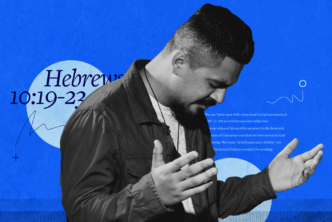A Priori is a newish series in which we put three simple questions to scholars undertaking important research in biblical studies, theology, ethics, and more. We love to hear from authors whose mission is the church, whose vocation is research. This week we hear from David Palmer and his work on rhetoric tables in the New Testament.
1. Who are you, where did you study, and what work have you published so far?
My name is David George Palmer and I am a Supernumerary Minister of the Methodist Church of Great Britain. I studied firstly at University College London to become an Architect and registered in 1975.
In 1976 I went with my wife Sue and our two children then to All Nations Christian College, Ware, England. It was while there that my call to the Methodist Ministry began to reveal itself. After training at Wesley House and Fitzwilliam College, Cambridge University, I was ordained in Durham in 1983 and began a lifetime of itinerant Ministry, firstly in Wales where I published my first book and then in Scotland, where in the 1990s, I researched for my PhD at Glasgow University (part-time).
My post graduate research continued in Sri Lanka and, indeed, continues to this day. For my last connection with any college, I was an Honorary Research Fellow of the Queen’s Foundation, Birmingham. From 2015-2017 I undertook a two-year Exhibition Tour of Great Britain: An Exhibition in Art: Seeing the New Testament for what it is. I have also had stalls at large Christian Resources Exhibitions in the UK to promote an understanding of the texts.
So far, I have self-published twelve books with eight still available today:
- 1988, Sliced Bread: the Four Gospels, Acts & Revelation: their Literary Structures
- 1999, The Markan Matrix: A Literary-Structural Analysis of the Gospel of Mark
- 2004-16, New Testament: New Testimony to the Skills of the Writers and First Readers; latest (fifth) Illustrated Exhibition Edition
- 2019, A Five-Book Amazon-Kindle Series: The Four Gospels in Focus: Viewed through the Lens of Hellenist (Ancient) Rhetoric
For all that I record above, this work has hardly seen the light of day! Over my working years, I never held a University or College appointment. Ministry was my full-time calling.
Academic support has never been easily secured: as a result I have never been able to attract the help of a publisher. I have, however, self-published my books, produced work on my website and on academia.edu, and presented on the texts on as many occasions as I have been able.
2. What research/writing project are you currently working on that you are most excited about? Have you presented papers related to this topic, and can you give us a little taster from your writing?
I have a book proposal under the title, The Rhetorical Table of the New Testament (see PDF below). This book will include the table itself and a presentation on each of the twenty-seven books, giving their rhetorical details, the Greek fully-parsed and rhetorically analysed, and many full translations too in literal English set out to the Greek format to give maximum help to non-Greek readers.
The Rhetorical Table of the New Testament will be to New Testament Studies what Mendeleev’s chart of 1869 is to Scientific Study today.
The future of New Testament Studies will be in helping would-be readers (non-scholarly and scholarly) to read these texts for themselves in their own languages (wherever they live in the world) but in the ways that the writers always intended.
I’ve included the texts themselves with all their reading helps, as preserved unseen in the Greek for the last seventeen-hundred years, for all to read for themselves and, given a little introduction to the writers’ writing methods, to understand too through their own reading!
Because of this literary study, we can now identify the writers’ common writing style:
- we can locate with pinpoint precision the original divisions of their texts
- we can define whole book and letter structures
- we can jettison ‘chapter and verse’ and use the texts’ own self-referencing systems we can establish the leading ideas of the texts and the purposes behind them
- we can see features and characteristics of the texts that will amaze
- we can reconstitute/critically restore original texts
- we can now read, teach and preach the texts as their writers always intended
- we can treasure the gospels as ‘first-century’-creeds/eternal truth in story-form, and we can see how the gospels kept/keep an open door to future development.
3. Which readers is the final product intended for, and when do you anticipate we might see the fruit of your research in published form?
My work is for all who are passionate to know what it is we are handling when we take up the New Testament and the Bible as a whole into our hands.
Tell us about your research. Send an email to tavis.bohlinger@faithlife.com answering the three questions above. Contributions are published in the order they are received. We look forward to highlighting your work!




